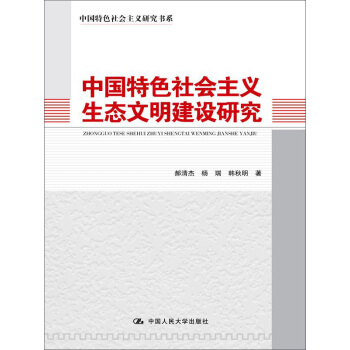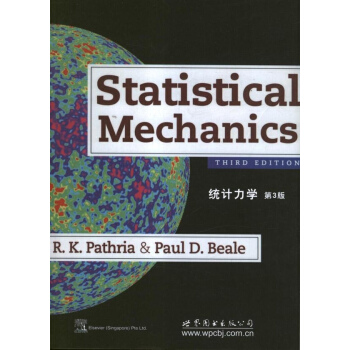![信息安全系列:计算数论与现代密码学(英文版) [Computational Number Theory and Modern Cryptography]](https://pic.windowsfront.com/11144728/5668eed0N32e8f069.jpg)

具体描述
内容简介
数论和密码学是两个不同的学科,且分属于不同的研究领域,而现代公钥密码体制的创立和应用则将这两个不同的学科紧密地联系在一起。这是因为这些密码体制的安全性几乎完全基于某些数论问题的难解性。比如极负盛誉的RSA密码体制之所以难以破译,就是因为整数分解问题难以快速解决。《信息安全系列:计算数论与现代密码学(英文版)》首先从计算理论的观点介绍数论中一些难解性问题,如整数分解问题和离散对数问题(包括椭圆曲线离散对数问题),然后讨论基于这些难解性问题的现代公钥密码体制,最后讨论这些难解性问题的量子计算方法以及这些密码体制的量子攻击方法:由于量子计算仅适合于快速解决某些难解性数论问题(并非所有难解性的数论及数学问题),因此还讨论了某些量子计算鞭长莫及的数学问题以及基于这些问题的抗量子密码体制。此外,书中还配有大量实例和练习,便于读者学习和掌握。《信息安全系列:计算数论与现代密码学(英文版)》可作为高等学校计算机、信息安全、电子与通信工程、数学等专业高年级本科生和研究生的教材,也可作为相关领域研究人员的参考书。作者简介
Song Y. Yan(颜松远),江西吉安人。获中国科学院研究生院理学硕士学位,并获英国约克大学数学博士学位。长期在国外大学从事计算数论、计算理论和密码学等方面的科研与教学工作,在Springer出版专著4部:1.《Number Theory for Computing》第1版(2000年)、第2版(2002年)、波兰文版(2006年,华沙国家科技出版社)、中文版(2007年,清华大学出版社);2.《Primality Testing and Integer Factorization in Public-Key Cryptography》第1版(2004年)、第2版(2009年);3.《Cryptanalytic Attacks on RSA》第1版(2007年)、俄文版(2010年,莫斯科国家科技出版中心);4.《Quantum Attacks on Public-Key Cryptosystems》第1版(2012年)。内页插图
目录
Part I preliminaries1 introduction
1.1 what is number theory?
1.2 what is computation theory?
1.3 what is computational number theory?
1.4 what is modern cryptography?
1.5 bibliographic notes and further reading
References
2 fundamentals
2.1 basic algebraic structures
2.2 divisibility theory
2.3 arithmetic functions
2.4 congruence theory
2.5 primitive roots
2.6 elliptic curves
2.7 bibliographic notes and further reading
References
Part II computational number theory
3 primality testing
3.1 basic tests
3.2 miller-rabin test
3.3 elliptic curve tests
3.4 aks test
3.5 bibliographic notes and further reading
References
4 integer factorization
4.1 basic concepts
4.2 trial divisions factoring
4.3 p and p - 1 methods
4.4 elliptic curve method
4.5 continued fraction method
4.6 quadratic sieve
4.7 number field sieve
4.8 bibliographic notes and further reading
References
5 discrete logarithms
5.1 basic concepts
5.2 baby-step giant-step method
5.3 pohlig-hellman method
5.4 index calculus
5.5 elliptic curve discrete logarithms
5.6 bibliographic notes and further reading
References
Part III modern cryptography
6secret-key cryptography
6.1 cryptography and cryptanalysis
6.2 Classic secret-key cryptography
6.3 Modern secret-key cryptography
6.4 bibliographic notes and further reading
References
7 integer factorization based cryptography
7.1 RSA cryptography
7.2 Cryptanalysis of RSA
7.3 Rabin cryptography
7.4 Residuosity based cryptography
7.5 zero-knowledge proof
7.6 bibliographic notes and further reading
References
8 discrete logarithm based cryptography
8.1 Diffie-Hellman-Merkle key-exchange protocol
8.2 e1gamal cryptography
8.3 Massey-Omura cryptography
8.4 DLP-based digital signatures
8.5 bibliographic notes and further reading
References
……
Part IV Quantum resistant cryptography
Index
前言/序言
The book is about number theory and modem cryptography. More specically, it is about computational number theory and modem public-key cryptography based on number theory. It consists of four parts. The first part, consisting of two chapters, provides some preliminaries. Chapter 1 provides some basic concepts of number theory, computation theory, computational number theory, and modem public-key cryptography based on number theory. In chapter 2, a complete introduction to some basic concepts and results in abstract algebra and elementary number theory is given.The second part is on computational number theory. There are three chapters in this part.Chapter 3 deals with algorithms for primality testing, with an emphasis on the Miller-Rabin test, the elliptic curve test, and the AKS test. Chapter 4 treats with algorithms for integer factorization, including the currently fastest factoring algorithm NFS (Number Field Sieve),and the elliptic curve factoring algorithm ECM (Elliptic Curve Method). Chapter 5 discusses various modem algorithms for discrete logarithms and for elliptic curve discrete logarithms.It is well-known now that primality testing can be done in polynomial-time on a digital computer, however, integer factorization and discrete logarithms still cannot be performed in polynomial-time. From a computational complexity point of view, primality testing is feasible (tractable, easy) on a digital computer, whereas integer factorization and discrete logarithms are infeasible (intractable, hard, difficult). Of course, no-one has yet been able to prove that the integer factorization and the discrete logarithm problems must be infeasible on a digital computer.
Building on the results in the first two parts, the third part of the book studies the modem cryptographic schemes and protocols whose security relies exactly on the infeasibility of the integer factorization and discrete logarithm problems. There are four chapters in this part.Chapter 6 presents some basic concepts and ideas of secret-key cryptography. Chapter 7 studies the integer factoring based public-key cryptography, including, among others, the most famous and widely used RSA cryptography, the Rabin cryptosystem, the probabilistic encryption and the zero-knowledge proof protocols. Chapter 8 studies the discrete logarithm based cryptography, including the DHM key-exchange protocol (the world's first public-key system), the E1Gamal cryptosystem, and the US Government's Digital Signature Standard (DSS), Chapter 9 discusses various cryptographic systems and digital signature schemes based on the infeasibility of the elliptic curve discrete logarithm problem, some of them are just the elliptic curve analogues of the ordinary public-key cryptography such as elliptic curve DHM, elliptic curve E1Gamal, elliptic curve RSA, and elliptic curve DSA/DSS.
用户评价
这本书的封面设计得很有意思,那种深邃的蓝色背景配上一些抽象的数字图案,一眼就能看出它跟数学和计算机科学的交叉领域有关。我拿到手的时候,首先翻阅了一下目录,感觉内容非常扎实。作者的写作风格很有条理,虽然是英文原版,但术语的解释都很清晰,即便是初次接触这个领域的读者也能很快跟上节奏。全书的结构安排得很合理,从基础的数论概念入手,逐步深入到现代密码学中的实际应用,中间穿插了不少经典和前沿的研究案例。
评分这本书的深度绝对不是一般入门读物可以比拟的。它在推导公式和证明定理时非常严谨,每一个步骤都交代得清清楚楚,让人感觉作者对这个领域的理解非常透彻。我特别欣赏作者在讲解复杂算法时的那种“庖丁解牛”式的拆解,把原本看似难以捉摸的数学原理,用非常直观的方式展现出来。对于那些希望不仅仅停留在“会用”的层面,而是想深究其“所以然”的读者来说,这本书无疑是一份宝贵的资源。
评分阅读体验上,这本书的排版和印刷质量都值得称赞。纸张的质感很好,长时间阅读也不会感到眼睛疲劳。不过,坦白说,对于非数学专业背景的读者来说,某些章节的阅读门槛还是不低的,需要一定的耐心和基础知识储备。我建议可以结合一些在线资源或者讲义一起学习,这样能更好地消化书中的深度内容。虽然有些地方需要反复琢磨,但每一次攻克一个难点后的成就感也是非常巨大的。
评分这本书的实用性是它的一大亮点。它不仅仅是停留在理论层面,而是紧密结合了当前密码学领域的热点和挑战。书中的例子和案例分析都非常贴近实际应用场景,这使得抽象的数学概念立刻变得鲜活起来。对于那些在安全工程或密码学研发岗位工作的人员来说,这本书可以作为一本非常可靠的工具书和参考手册,随时查阅其中的核心原理和实现细节。
评分总体而言,这是一本厚重而实在的专业著作。它体现了作者深厚的学术功底和对该领域的热情。这本书的价值在于它提供的深度和广度,它不像市面上很多快餐式的技术书籍,读完后只留下零散的记忆点。相反,它提供了一个系统性的知识框架,帮助读者建立起坚实的理论基础,足以支撑未来的深入研究或项目开发。对于想要成为该领域专家的读者来说,这本书绝对是书架上不可或缺的一员。
相关图书
本站所有内容均为互联网搜索引擎提供的公开搜索信息,本站不存储任何数据与内容,任何内容与数据均与本站无关,如有需要请联系相关搜索引擎包括但不限于百度,google,bing,sogou 等
© 2025 book.coffeedeals.club All Rights Reserved. 静流书站 版权所有



![应用统计学丛书:随机估计及VDR检验 [Randomized Estimation and VDR Test] pdf epub mobi 电子书 下载](https://pic.windowsfront.com/11381879/5652a6b8N41a1547c.jpg)

![南海:印度洋海洋环境风险评估与应急响应 [South China Sea—Indian Ocean Marine Envionment Risk Assessment and Emergency Response] pdf epub mobi 电子书 下载](https://pic.windowsfront.com/11388020/rBEhVFLg53YIAAAAAAEFHZgjPAYAAILMQHa3wkAAQU1350.jpg)
![爱因斯坦全集(第九卷):柏林时期(1919年1月-1920年4月) [The Collected Papers of Albert Einstein] pdf epub mobi 电子书 下载](https://pic.windowsfront.com/11437614/rBEQYFNLfhIIAAAAAACe2DcSptIAAEZHwEqSH8AAJ7w412.jpg)
![典型工业废水处理设施营运实操 [Practical Operation of the Facilities for Treating Typical Industrial Wastewater] pdf epub mobi 电子书 下载](https://pic.windowsfront.com/11594895/54c8c9a1Nd20bedcc.jpg)
![盐构造 [Salt Tectonics] pdf epub mobi 电子书 下载](https://pic.windowsfront.com/11734674/55c32ee4N6fdb07dd.jpg)








![地图制图学与地理信息工程学科进展与成就 [Advances in cartography and geographic information engineering] pdf epub mobi 电子书 下载](https://pic.windowsfront.com/10796694/166e0113-9dc2-4671-9521-99e56f910ca5.jpg)
![临江大学优秀校本教材:高等代数方法与技巧 [Methods and Skills for higher Algebra] pdf epub mobi 电子书 下载](https://pic.windowsfront.com/10985482/rBEIDE-6PFcIAAAAAAC16JXXoUAAAAEBgPgn_oAALYA635.jpg)

